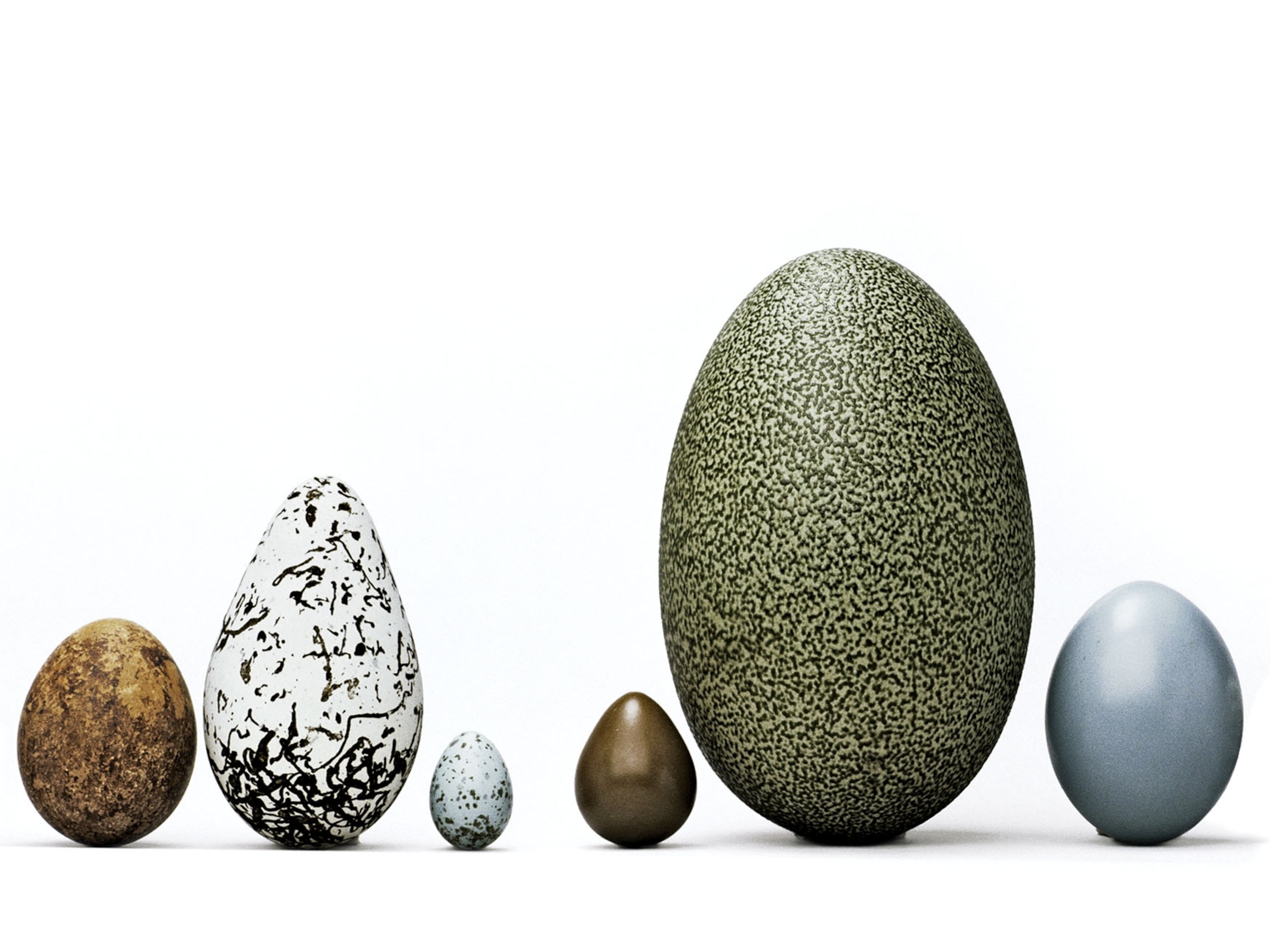
Why Are These Male Fish Growing Eggs?
Fish in wildlife refuges are feminized, probably by hormone-skewing pollution. What does this portend for the health of all creatures—and people?
SWANTON, Vermont—Silver maples, lanky and bare, stand on the frozen flood plain at the Missisquoi National Wildlife Refuge. Two sets of tracks—fox and mouse—weave across the snowy surface of the river, which is home to bass, muskrats, and beavers. In the fall, more than 20,000 migrating ducks will converge here, and in the summer, one of the refuge’s rarest species, spiny softshell turtles, will bask and forage on its gravelly beaches and sandbars.
Sixty miles south of Montreal, near the U.S.-Canada border, Missisquoi National Wildlife Refuge is one of the most productive and pristine wetland ecosystems in the Northeast. Yet even here, scientists have found an abundance of fish with bizarre abnormalities that suggest exposure to hormone-disrupting water pollution.
Scientists from the U.S. Fish and Wildlife Service and the U.S. Geological Survey studied fish in 19 national wildlife refuges in the U.S. Northeast, including Missisquoi. Their conclusion: An astonishing 60 to 100 percent of all the male smallmouth bass they examined had female egg cells growing in their testes.
Scientists call this condition intersex, and while its exact causes are unknown, it’s been linked to manmade, environmental chemicals that mimic or block sex hormones.
Over the past decade, feminized male fish have been discovered in 37 species in lakes and rivers throughout North America, Europe, and other parts of the world. Experts say the new discovery in protected wildlife refuges is worrisome because it suggests that pollution may be even more pervasive than previously thought.
“There are no truly untouched areas. I think the take away here is that everything we do, everything we use or put on the land, ends up in the water at some point,” says Luke Iwanowicz, a U.S. Geological Survey fish researcher based in West Virginia who led the wildlife refuge study.
What scientists don’t know is what these feminized fish portend for the health of these species, for the environment, and perhaps for humans, too.
“When fish are getting intersex, it’s probably a good indication that something is wrong in the environment,” says Vicki Blazer, a researcher at the U.S. Geological Survey’s National Fish Health Research Laboratory in West Virginia.
Female Eggs in Male Testes
Intersex males don’t look outwardly different than normal males. In fact, federal scientists uncovered the condition by accident in the Chesapeake Bay watershed in 2003. They were conducting a post-mortem examination to determine the causes of a smallmouth bass die-off when they found male fish with female egg cells in their testes. In a follow-up study, they found these intersex conditions in more than three-quarters of male smallmouth bass caught in parts of the Shenandoah and Potomac Rivers in Virginia and West Virginia.
Gender in fish isn’t always straightforward. Some species of fish—including clown fish, grouper, and gobies—are hermaphrodites, meaning they naturally have both male and female sex organs. They are born with the ability to change their gender—it’s a special adaptation that some species have evolved to improve their chances at reproducing.
Intersex is different. It happens in species of fish that aren’t hermaphroditic, and it doesn’t help reproduction. In severe cases, it can make fish sterile.
“Intersex definitely is not normal,” says Don Tillitt, a U.S. Geological Survey toxicologist. The presence of female eggs in male testes indicates some kind of hormonal confusion. Scientists call this phenomenon endocrine disruption.
Mounting evidence suggests that intersex in fish may be the result of exposure to contaminants that encompass a wide range of natural and synthetic chemicals, including pharmaceuticals, pesticides, and personal care products. Some chemicals of concern include estrogens from birth control pills, the plasticizer bisphenol A, and the herbicide atrazine. These chemicals can mimic and in some cases interrupt a body’s normal hormonal processes.
Worldwide, intersex conditions caused by hormonal disruption have occurred in an array of aquatic animals, including alligators, turtles, and frogs.
In the Chesapeake Bay watershed, researchers found the most evidence of intersex fish in areas with a lot of agriculture and wastewater effluent, and large human populations. Hormonally active chemicals have been shown to flow into rivers and lakes through discharge from wastewater treatment plants and runoff from roads, yards, and farm fields.
“We knew this was going on in the Chesapeake watershed, but we didn’t expect to see issues like this in protected natural areas with far less development,” Iwanowicz says.
A Symptom of Polluted Water
When Iwanowicz and his colleagues examined bass—both largemouth and smallmouth—on wildlife refuges from Virginia to Maine, their goal was to assess potential water quality threats from endocrine-disrupting chemicals. Bass—especially smallmouth bass—serve as indicator species for scientists, meaning they are particularly sensitive to pollutants in the environment.
“One of the roles of the national wildlife refuges is to preserve natural ecosystems, so it’s a management issue for us,” says Ken Sturm, Missisquoi’s refuge manager. “Water is the blood of this ecosystem. Intersex in fish may be a symptom of larger problems with water quality that we’re just beginning to understand.”
Some of the refuges sampled, such as John Heinz at Tinicum in Philadelphia and Great Swamp in New Jersey, are close to major East Coast urban centers. Others, including Moosehorn National Wildlife Refuge in Maine and Missisquoi, are more remote—surrounded by forests, farm fields, and small towns.
The researchers found intersex smallmouth bass everywhere they looked. About 85 percent of the males collected in the refuges were intersex. At least some males at every site had female egg cells. It was less prevalent in largemouth bass—about 27 percent.
Surprisingly, the phenomenon wasn’t nearly as widespread in previous testing at eight U.S. river basins, including the Mississippi, Rio Grande, and Columbia Rivers. In that research, 33 percent of male smallmouth bass were feminized.
Why are there so many intersex fish on the refuges? No one knows.. For most of the refuges, there are no identifiable sources—no sewage treatment plant or industrial facility, for example—putting out pollutants that could explain the phenomenon.
“It’s really pretty staggering to be seeing these percentages in areas we would think of as pristine natural areas,” says Christopher Martyniuk, a fish biologist at the University of Florida who was not involved with the refuge study.
We like to think of the far wilds of northern Vermont or Maine as pristine, explains Iwanowicz, yet the newest study serves as a reality check.
Even protected places are influenced by their surroundings, adds Sturm, who has managed the Mississquoi refuge for five years. The Mississquoi River winds for 80 miles through the northern Green Mountains along the U.S.-Canada border before it pours into Lake Champlain. The area is rural, peppered with dairy farms, small towns, and vacation homes. The refuge is made up of narrow strips of land that stretch like a claw from the river mouth into the lake.
“Anything that goes into the water along the way water flows right through the refuge,” he says.
Too Much Estrogen
Estrogen-like chemicals are the suspected culprits. A higher-than-expected level of estrogen activity was detected in water collected from 79 percent of the sites. However, no tests have occurred yet to identify specific chemicals.
An unusual signature in the blood of fish from the Missisquoi River also points toward environmental estrogens. Researchers found high levels of vitellogenin—a protein involved in producing egg yolk—in many smallmouth bass. In male fish, the gene that tells the body to produce vitellogenin is usually “turned off,” explains Iwanowicz. That gene only “switches on” in the presence of estrogen, a female sex hormone.
“When we find vitellogenin in the blood it’s a pretty clear indication that those male fish were exposed to extra estrogens of some kind,” says Iwanowicz.
One environmental estrogen is ethinyl estradiol—a chemical found in birth control pills. In laboratory studies, scientists have been able to induce intersex in some fish by exposing males to the compound.
Yet the answers in nature—where fish are exposed to a variety of chemicals and other stressors—are never as clear-cut as in the tightly controlled laboratory environment.
Other environmental factors might contribute to intersex in fish, including low levels of dissolved oxygen and warming water temperatures. Scientists don’t yet understand how some of these other factors may be influencing feminization, explains Tillitt.
Researchers are also probing the consequences of intersex for fish health.
Experiments with minnows suggest that exposure to environmental estrogens may cause problems for fish populations. Very severe levels of feminization—having a lot of egg cells in the testes—can impair sperm quality, impeding a fish’s ability to reproduce. But feminization is a continuum: Males with only a few eggs in their testes may have no trouble at all reproducing.
The intersex findings in bass at the refuges don’t appear to be linked to any population-scale reproductive problems for the popular sport fish.
Nevertheless, Sturm worries about what the findings mean for some of the refuge’s more vulnerable species, such as the spiny softshell turtle. About 200 of the leathery-skinned turtles reside in Lake Champlain, most of them clustering around the mouth of the river. They’re vulnerable to water pollution and other threats, including predation, boating, and fishing hooks. No other population of spiny softshell turtle exists in New England or Quebec, though it is found elsewhere in North America.
“Bass are a sentinel species, but it’s possible that other animals could be affected too,” says Sturm.
Reproductive impairment isn’t the only concern, says Blazer. In the Potomac and Susquehanna Rivers, she’s seen an increase in diseases, die offs, and infections in some fish species. Their immune systems are weak. These health problems seem to correlate with levels of intersex.
“It’s possible that the environmental chemicals inducing intersex may also be causing immune system problems,” she says.
Exposures to endocrine disrupting chemicals in drinking water, food, and household products have been linked to health problems in people too, including reduced fertility, developmental delays in children, and some cancers. But it’s too soon to say whether feminized fish are indicative of health effects for humans too.
“Knowing that environmental chemicals which disrupt endocrine function are out in the environment at concentrations above thresholds for effect should lead us to try to evaluate the risk in a more comprehensive fashion,” says Tillitt.
Along the Missisquoi
On the banks of the Missisquoi, frozen marsh grasses crunch underfoot. A downy woodpecker flits among the wayward branches of an uprooted tree. Muskrat lodges—small mounds made from bulrush and cattail—dot the landscape.
Winters are bleak here, but in a few months, the ice will thaw and the refuge once again will teem with wildlife. Established in 1943 as part of the Migratory Bird Conservation Act, the Missisquoi refuge occupies a prime spot on the Atlantic Flyway—one of North America’s major bird migration routes.
Two years ago, the refuge and the Missisquoi delta were designated a Wetland of International Importance under an international treaty that calls attention to globally important ecosystems. That puts the refuge on a list that includes renowned habitats such as the Florida Everglades and Africa’s Okavango Delta.
While seven miles of trail and other public activities occur at the refuge, much of the refuge’s 7,000 acres are off-limits to people. “Wildlife is our first priority. Humans come second,” says Sturm.
Yet the refuge—and the river itself—are not untouched. Vermont Route 78, a main thoroughfare connecting northern Vermont with New York State—bisects the refuge wetlands, causing wildlife deaths from roadkill. Just south of the refuge, an abandoned dam blocks sturgeon, walleye and other fish species from reaching important spawning grounds in Lake Champlain. In the summer, manure from farm fields upstream trickles into the river, causing smelly algae blooms in Missisquoi Bay.
“As stewards of an internationally important wetlands, we do what we can to protect it, but we don’t have ultimate control over its fate,” says Sturm. “Communities must come together to protect the entire watershed.”








